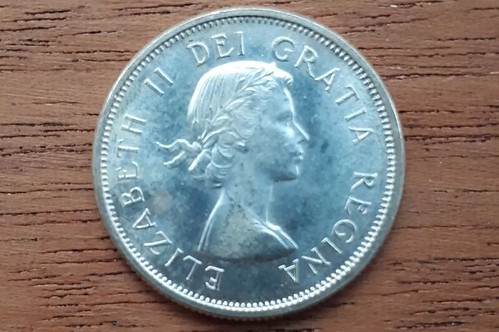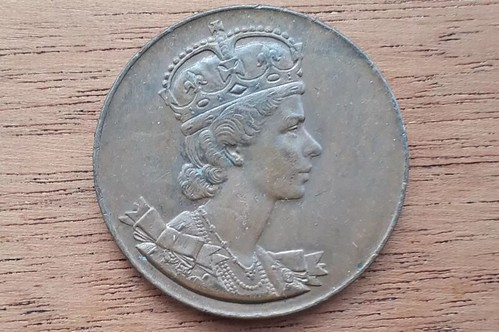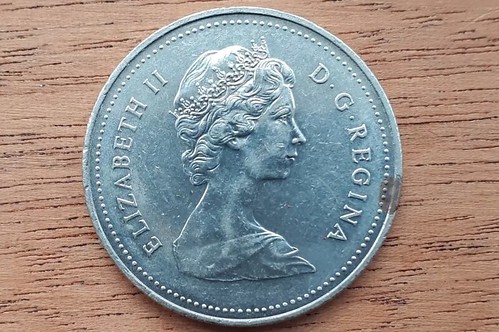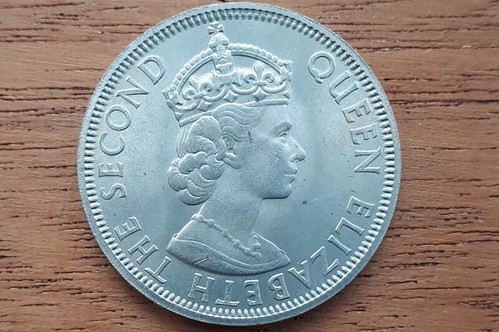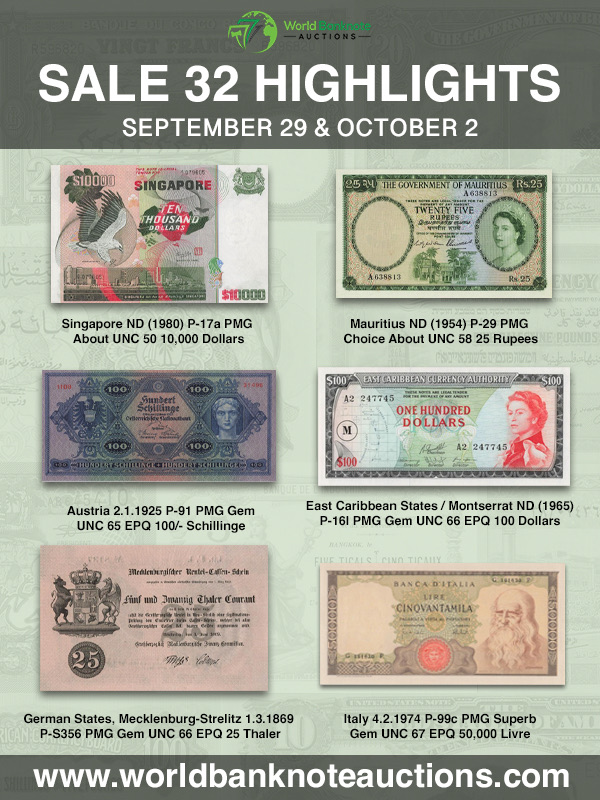
PREV ARTICLE
NEXT ARTICLE
FULL ISSUE
PREV FULL ISSUE
V25 2022 INDEX E-SYLUM ARCHIVE COINS OF QUEEN ELIZABETH IIEarlier this week David Pickup sent in a group of photos of the coins of Queen Elizabeth II. Yesterday an article turned up with some familiar-looking photos and the intro, "BBC News takes a closer look at some of the coins made during the Queen's 70-year reign, with the help of The Oxford Numismatic Society." Here's an excerpt - see the full article online for some additional photos. -Editor Her Majesty's first portrait was created by Mary Gillick in 1953, seen here on this 25-cent piece from Canada that dates from 1964 This coronation medallion dates back to 1953 and was also minted in Canada This is my favorite image - I was unfamiliar with these medals. Very nice. -Editor The society - a group of enthusiastic coin collectors - was set up more than 60 years ago and boasts an impressive collection. Their secretary David Pickup told the BBC he expects new coins to be issued after the Coronation of King Charles III, "next year, possibly Spring time". King Charles has appeared on coins before to commemorate specific birthdays. "There will probably be a competition for a new portrait," Mr Pickup says. "It will be interesting whether Charles will be shown wearing a crown or be bareheaded, and what Royal titles will appear on the coins." This is the famous Arnold Machin portrait of the Queen, used on coins in the 1960s, 70s, and 80s. 'Dei Gra Reg Fid Def' translates from Latin as "Reigning by the Grace of God, Defender of the Faith" Her Majesty's portrait is also used on coins in Australia, Gibraltar, and the Falkland Islands. This one is from Malaya and British Borneo. He also explains why the Queen always faces to the right. "Each new monarch since the 17th Century has looked in the opposite direction to their predecessor," he says. "The new portrait is likely to look to the left. "The exception was Edward VIII, who was never crowned. Very few coins were made for him and his portrait looked left like George V and George VI. There is a story that he preferred his left profile. "The tradition was started by Charles II, who wanted to turn his back on Puritan coins." The society says it is proud Oxford itself once played a part in minting the nation's currency. "The king's predecessor Charles I established his headquarters in Oxford during the English Civil War," Mr Pickup explains. "His mint was here with him from 1643 to 1646. A mint was set up in Oxford in New Inn Hall, at the present site of St. Peter's College." "Collecting coins is a fascinating way to learn about local and international history, design and, everyday life," he adds. "It is almost like time travel, because handling an old coin puts you in touch with life centuries ago." Clearly, the Queen's demise makes her coins a hot topic, but all coin clubs local or national should take a cue from the Oxford Numismatic Society - provide journalists with a good story and photos and they just might publish something. There's always an angle providing a connection between numismatics and local, national or even world history and events. Congratulations on the great publicity. -Editor
To read the complete article, see:
Wayne Homren, Editor The Numismatic Bibliomania Society is a non-profit organization promoting numismatic literature. See our web site at coinbooks.org. To submit items for publication in The E-Sylum, write to the Editor at this address: whomren@gmail.com To subscribe go to: https://my.binhost.com/lists/listinfo/esylum All Rights Reserved. NBS Home Page Contact the NBS webmaster 
|
